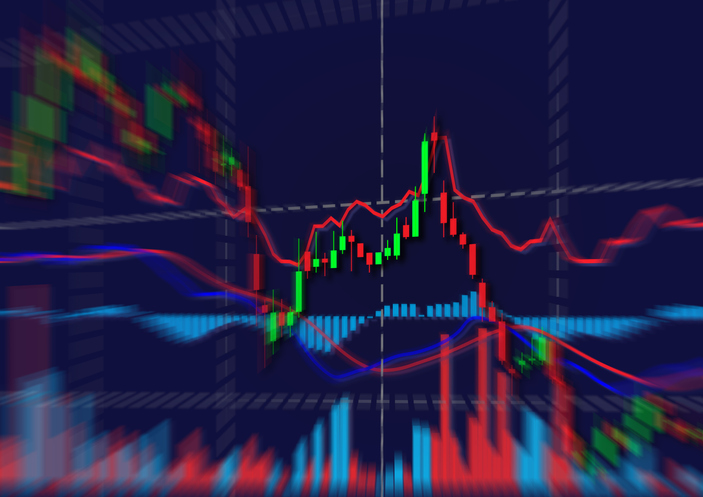What Are 0 DTE Options, Really?
At their core, 0DTE (Zero Days to Expiration) options are just standard index or equity options—except they expire the same day they’re traded. That means they offer instant feedback, rapid-fire opportunities, and yes, serious risk. These contracts used to be a Friday-only thing for SPX. Now? The CBOE offers them every weekday. The result: a growing chunk of daily market volume revolves around trades that vanish by the closing bell.

Who’s Using Them—and Why?
Retail traders love them for the cheap lottery-ticket appeal. Hedge funds and institutions? They’re in it for something very different: precision hedging, short-term risk control, and sometimes, to influence intraday price action.
0DTE options let traders take positions around news events, economic reports, or technical levels with minimal capital at stake. If you’re right, the leverage can be wild. If you’re wrong, you’re usually out just the cost of the premium.
The Technical Impact: Fuel for Volatility
Here’s where things get spicy: 0DTE flows don’t just respond to price—they can drive it. Because market makers often delta hedge these trades in real-time, big bursts of call or put buying can force rapid buying or selling of the underlying index. This leads to “gamma squeezes” that can turn sleepy mornings into chaotic afternoons.
Recent research shows that intraday volatility is increasingly correlated with 0DTE volume spikes. In other words, even if you’re not trading them, they’re probably affecting your trades.
Strategy Snapshot: The Iron Fly
One of the more risk-defined ways to play the 0DTE world? The Iron Fly.

This strategy involves:
- Selling an at-the-money call and put (same strike, same expiry)
- Buying a further out-of-the-money call and put on each side
You’re essentially building a tight “wings-in” Iron Condor, centered right on the current price. You want the underlying to sit still near the short strike by expiration. If it does, you pocket the premium. If it runs, the long wings cap your loss.
What makes this appealing in a 0DTE setting? You can collect a high percentage of the day’s total available premium in just a few hours—assuming price behaves.
IWM 0DTE Iron Fly: A Defined-Risk Trade Idea
Let’s say it’s 9:45 AM and IWM (the Russell 2000 ETF) is trading at $205.59. You could set up a same-day Iron Fly like this:
- Sell the 205 call and 205 put
- Buy the 208 call and the 202 put (1.6% wings on either side)
That gives you a short straddle at the money, protected by long options placed approximately 1.6% away—a distance that aligns with typical intraday movement in IWM and balances risk/reward.
You’re aiming to keep IWM pinned near 205. If it does, that short straddle decays fast in your favor. If it breaks out hard, your max loss is defined.
This kind of setup works best when implied volatility is high in the morning and expected to contract—or when you expect a “nothing burger” kind of trading day.
Example:
At the time of this writing, the 0DTE expected move based on volatility was +/- $2.24. Our 1.6% from the current price is about $3 away, so the expected move was within the standard 1.6% move.

The trade will finish profitably if IWM stays between $203.13 and $206.88 at expiration. However, due to theta decay, you can opt to target 20%—30% of the credit received as a profit target. If IWM stays within its expected move trading range, you might be out of this trade in about 60-70 minutes.
It’s important to note that a trade setup like this may only have a win rate of 51-60%, but it’s ok if the winners are close to or even more than the losers.
In the example above, the initial credit to open the trade was $1.86, so that’s the max profit you can make. Since the spread was $3-wide and you took in $1.86 in credit to open the trade, the max loss was only $114 per contract. You can see from the chart above that the profit (purple line) varies depending on where IWM closes at the end of the day.
You can add a stop loss of 20%-30% of the credit received to keep your losses small, even if that decreases your win rate. The trick is timing the entry and determining your risk/reward ratio to determine your profit target and stop loss amounts.
One More Thing: Watch Your Fees and Flags
Before you jump in, two important warnings:
- Commissions add up fast. Even with low-cost brokers, opening and closing multi-leg 0DTE trades five times a week can eat into your profits. Track your costs—don’t assume they’re negligible. An iron fly has four legs, so that’s eight trades between the open and close. Depending on your commission structure, a profit target of 20% of a $1.86 credit might not even clear your commission costs.
- Pattern Day Trader (PDT) rules apply. If your account is under $25,000 and you make more than three day trades in a rolling five-day period, your broker could flag or restrict your account. Make sure you understand your platform’s rules before you start stacking 0DTE trades like poker chips.
Final Word
0DTE options are fast, wild, and sometimes misunderstood. But with the right strategy—like the Iron Fly—they don’t have to be reckless. They can be methodical, structured, and even surprisingly conservative.
And in a market where timing is everything, being able to express a view for just a few hours might be the edge you didn’t know you needed.


